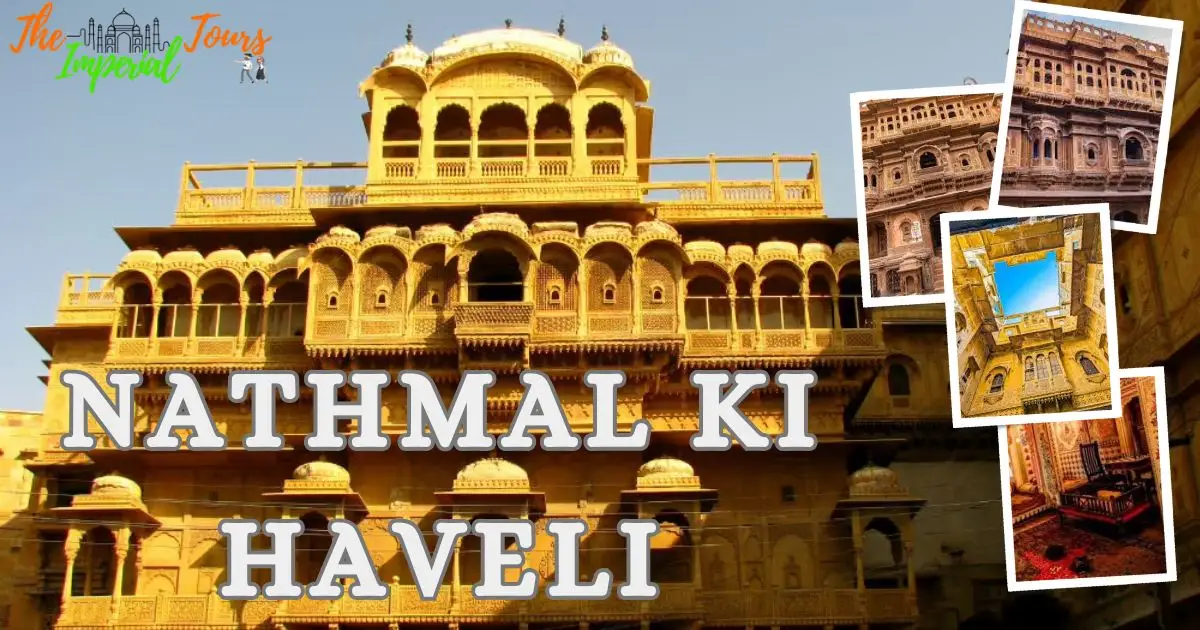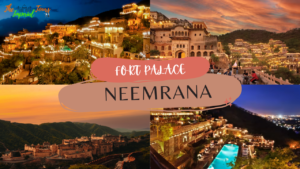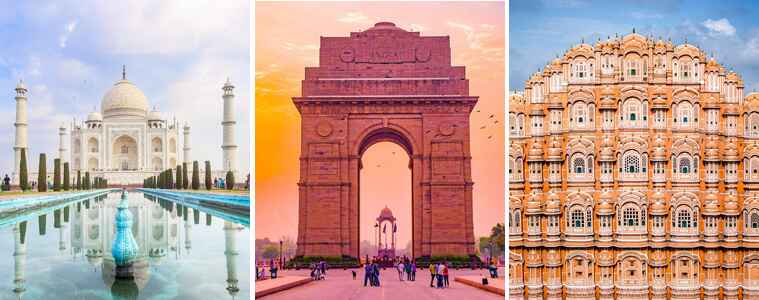Walking through the narrow golden lanes of Jaisalmer feels like stepping into a living museum. Every stone carries centuries of stories, and every corner reveals a glimpse of Rajasthan’s royal past. Among these treasures, Nathmal Ki Haveli shines as one of the city’s most captivating monuments.
Unlike the massive forts and palaces of Rajasthan, Nathmal Ki Haveli charms you with its artistry, detailed carvings, and an unusual story behind its construction. At The Imperial Tours, we love guiding travelers to hidden gems like this haveli, where history, culture, and architecture meet beautifully.
Nathmal Ki Haveli History: A Tale of Two Brothers
The Nathmal Ki Haveli history begins in the late 19th century when Diwan Mohata Nathmal, the Prime Minister of Jaisalmer, commissioned it. What makes this haveli extraordinary is not just its golden-yellow sandstone beauty but the fact that it was designed by two architect brothers—Hathi and Lulu. Legend says both brothers started working on opposite sides of the building, creating mirror-like structures. Yet, due to a lack of communication, the two halves didn’t turn out exactly the same. But instead of being a flaw, this mismatch made the haveli even more unique.
Carvings of elephants, flowers, horses, soldiers, even bicycles and European-style designs can be seen etched into the walls. This unusual mix shows how Jaisalmer wasn’t just a desert kingdom but a trading hub influenced by cultures from far and wide. If you’ve read about the Humayun Tomb history or explored Agra Fort, you’ll recognize how Indian monuments blend aesthetics with storytelling. Nathmal Ki Haveli is another chapter in that same epic saga of Indian heritage.
Nathmal Ki Haveli Entry Fee: Costs & Charges
The best part about visiting Nathmal Ki Haveli is that there’s no fixed government entry fee. You can admire its beautiful façade freely from the outside while wandering through the market streets. However, if you wish to step inside and explore the intricate interiors or click Nathmal Ki Haveli photos, there might be a nominal fee charged by the caretakers or the family members who still reside there.
Entry Fee (Approximate Guide):
| Visitor Type | Entry Fee (Outside) | Entry Fee (Inside, if allowed) |
| Indian Tourists | Free | ₹20 – ₹30 |
| Foreign Tourists | Free | ₹50 – ₹100 |
| Photography (Camera) | — | ₹50 – ₹100 (varies) |
Compared to iconic places like Akbar Tomb Sikandra Agra or Patwon Ki Haveli, Nathmal Ki Haveli offers a much more affordable yet equally enriching experience.
Pro Tip: Always ask permission before photographing residents or private areas—they’re usually friendly but may charge a small fee.
Nathmal Ki Haveli Timings: When to Visit
The Nathmal Ki Haveli timings are not as strict as larger heritage sites, since it’s located within the heart of Jaisalmer’s living quarters.
- General visiting hours: 8:00 AM – 7:00 PM
- Best time of the day: Morning (for crisp photography) or late afternoon (when the golden sandstone glows under the desert sun).
- Best season: October to March (cooler climate and festival season).
Unlike vast complexes like Agra Fort, Nathmal Ki Haveli can be explored in just 30–60 minutes. This makes it perfect for travelers who want a quick yet memorable cultural experience.
Nathmal Ki Haveli Photos: A Photographer’s Paradise
If you’re into photography, you’ll love this place. The intricate carvings look almost like lacework carved into stone. From elephants guarding the entrance to ornate balconies and windows with jaali (lattice) designs, every detail is picture-worthy. When you browse “Nathmal Ki Haveli photos” online, you’ll see plenty of images. But standing there in person, watching sunlight fall on those carvings, is magical. The details are so fine that even modern cameras struggle to capture their depth.
For comparison, Patwon Ki Haveli is larger and grander in size, while Nathmal Ki Haveli wins with the delicacy of its designs. Both are must-visits, but Nathmal offers a quieter, more intimate experience.
Why Nathmal Ki Haveli Deserves a Place in Your Jaisalmer Itinerary
- Unique architecture: A rare creation by two brothers with unmatched detailing.
- Budget-friendly: No fixed entry fee, making it accessible for all.
- Great for photographers: Every corner is Insta-worthy.
- Cultural blend: Combines Rajput and Islamic styles with surprising European touches.
- Central location: Easy to cover along with Patwon Ki Haveli and Jaisalmer Fort.
Conclusion
Nathmal Ki Haveli is more than just a sandstone structure—it’s a story carved into stone, a reminder of Jaisalmer’s golden legacy, and a treasure waiting to be discovered. Whether you’re a history buff, a photographer, or simply someone who loves culture, this haveli deserves your attention. So, when you plan your Jaisalmer journey, let The Imperial Tours be your guide to not just Nathmal Ki Haveli but also Rajasthan’s other timeless wonders.
FAQs
Q. Who built Nathmal Ki Haveli?
Ans. It was built in the late 19th century by two architect brothers, Hathi and Lulu, for Diwan Mohata Nathmal.
Q. What is the Nathmal Ki Haveli entry fee?
Ans. Outside view is free. Interiors may require a nominal charge of ₹20–100 depending on permission.
Q. What are the Nathmal Ki Haveli timings?
Ans. You can visit between 8 AM – 7 PM. Morning and evening are best for photography.
Q. Where is Nathmal Ki Haveli located?
Ans. It’s situated in the heart of Jaisalmer, near the main market area.
Q. How long does it take to explore Nathmal Ki Haveli?
Ans. Around 30 minutes to 1 hour is enough to explore and take photos.








